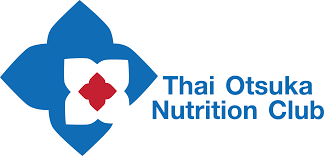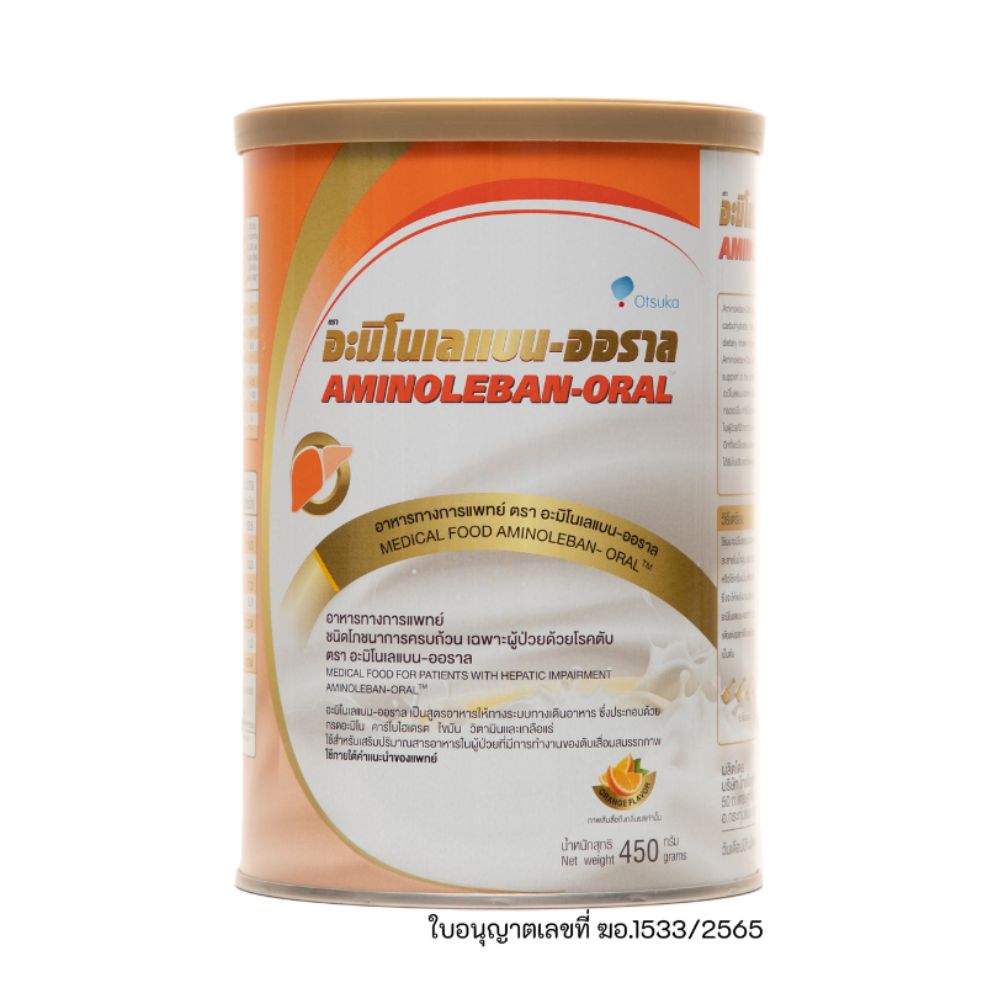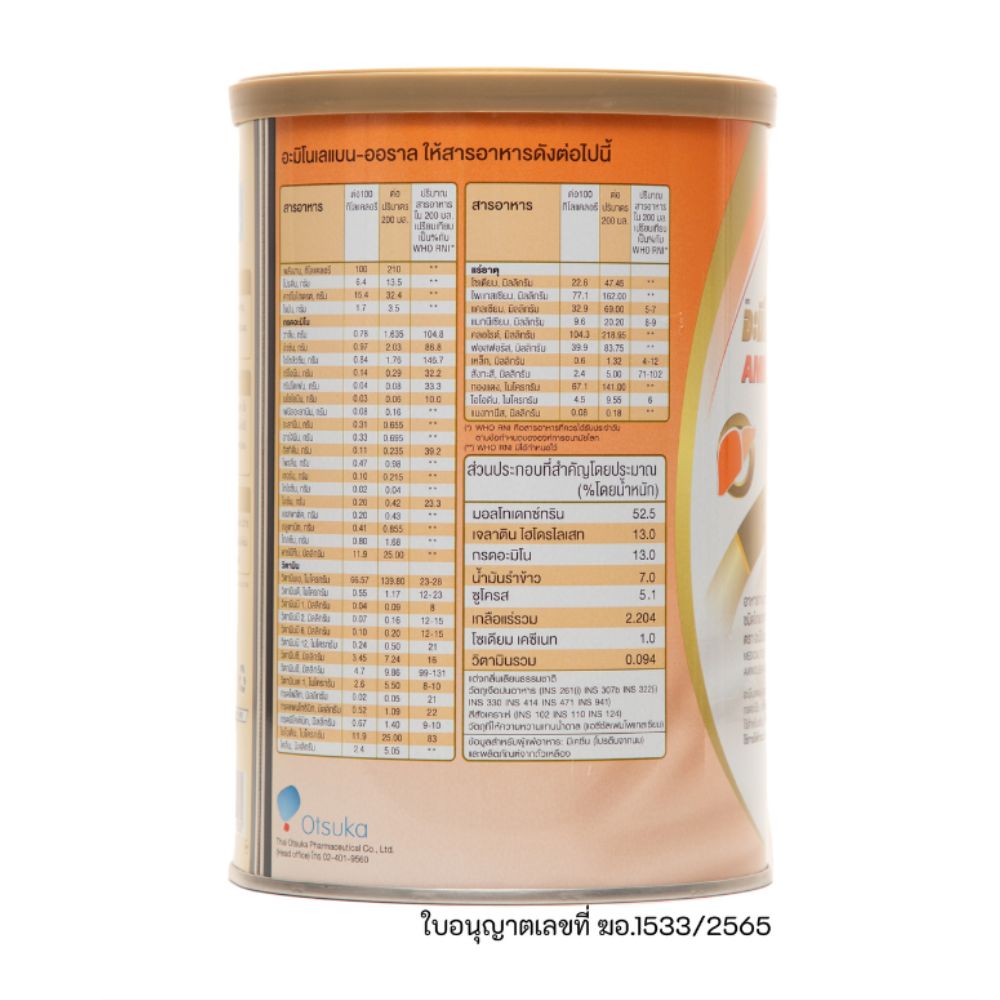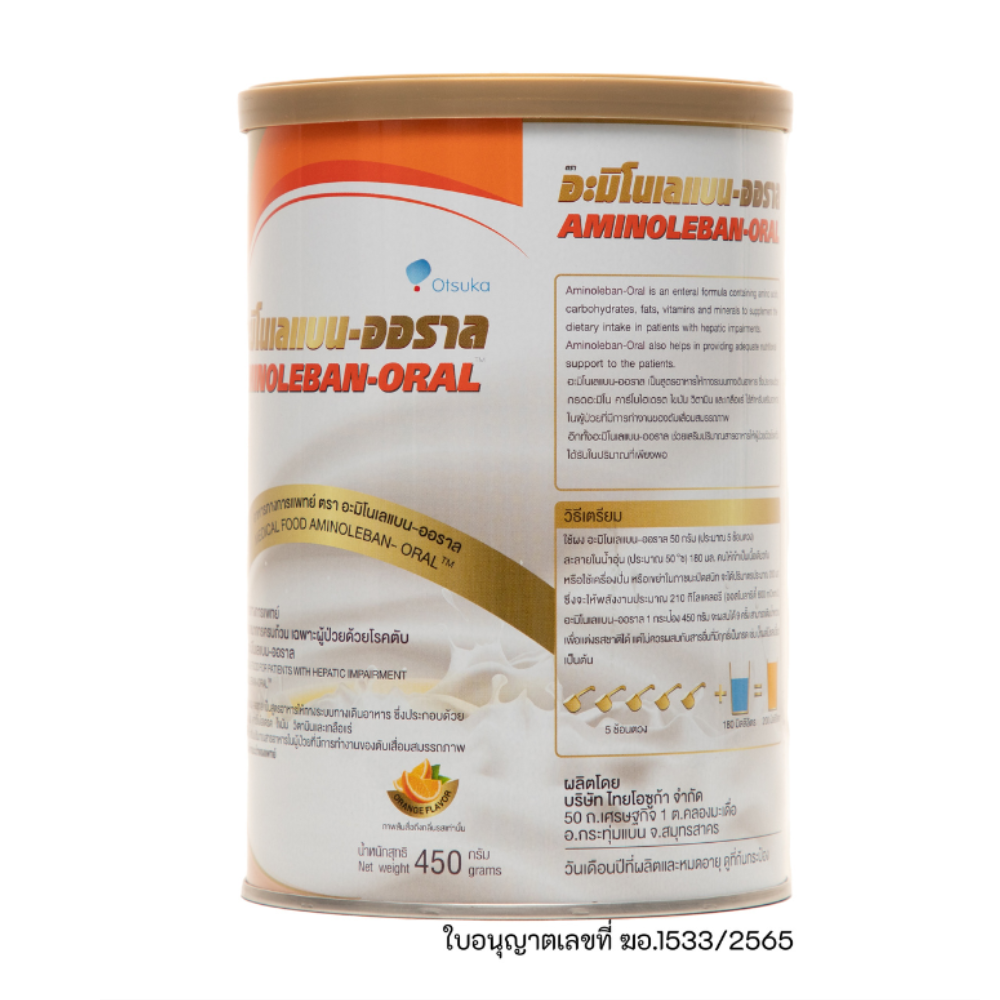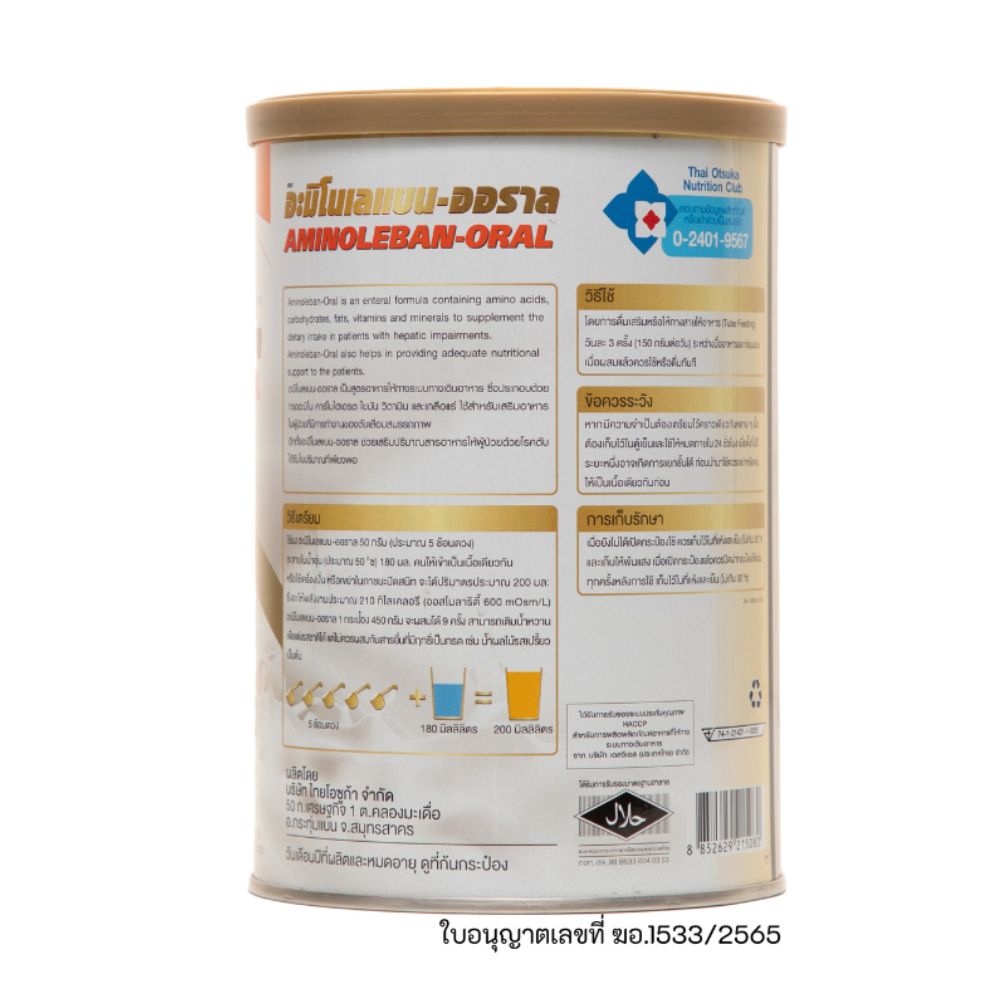What nutrients does AMINOLEBAN-ORAL provide?
1. High protein up to 25% includes
- BCAA (Branched Chain Amino Acid) 48% plays an important role that stimulates muscle protein synthesis, boosts immune system and improves symtoms of Hepatic Encephalopathy.
- Gelatin hydrolysate 48%
- Casein 4% is high quality protein, easily digested and absorbed
2. Fat
- Rice bran oil 100% provides completely essential fatty acid. As the patients with liver disease have problems in fatty metabolism, this ingredient is given in moderate amount in order that patients would acquire adequate essential fatty acid.
3. Carbohydrate
- Dextrin 90% great quality, easily digested and absorbed
- Sucrose 10% source of energy for patients and make the taste better.
4. Containing fat-soluable vitamin including A, D, E and K
5. Containing Zinc, of patients with liver disease lack
Why do Patients with liver disease have BCAA (Branched Chain Amino Acid) deficiency?
• Because the liver is responsible for the synthesis of BCAA , and because patients with liver illness consume protein and store half of it in the liver and half in the muscles, reduced functioning occurs, resulting in an inability to use nutrients as effectively as before.
• For the patients with liver disease, liver is unable to systhesize and store BCAA as well as before while the body need to utilise BCAA more. In order to get BCAA, this leads to an increase in muscle depletion. Patients with liver illness have less muscle mass and less BCAA stored in their muscles. As a result, the patients are deficient in BCAA.
What are the disadvantages of BCAA insufficiency in liver disease patients?
• It causes a drop in blood protein levels as well as a reduction in the body's immunity system.
• It causes a rise in protein depletion in muscles and other organs, resulting in reduced muscles in the arms and legs, atrophy, and increased fatigue.
• It increases AAA (Aromatic Amino Acids) in the body, which enter the brain more than BCAA, which causes an imbalance of neurotransmitters in the brain, which causes dementia from a liver illness known as Hepatic Encephalopathy.
How to drink AMINOLEBAN-ORAL. It is recommended to drink as a dietary supplement
• Mix 5 spoons (50g) with 200 ml water. A glass will give 210 kilocalories which contains 13.5 g of protein.
*The portion can be adjusted depending on the amount of energy required per day.
• Mix the powder with warm water to drink or feed through a tube three times a day, at brunch, afternoon, and before bed (MOST IMPORTANT)
Brief properties of AMINOLEBAN-ORAL
• A medical food rich in essential nutrients, ideal for people suffering from liver disorders such as cirrhosis, cancer, or Hepatic Encephalopathy.
• Contains BCAA that help raise protein levels and promote the balance of brain chemicals in patients.
• Reduces protein and energy deficiency in liver disease patients
• Improves the quality of life for patients with liver diseases
• Reduce the rate of death from liver illness
Limitation to the use of AMONOLEBAN-ORAL
Patients with amino acid metabolism disorders
Why does AMINOLEBAN-ORAL taste unfavorable ?
The amino acid, which is an important nutrient, causes an unpleasant taste. It is recommended that you mix it with something sweeter or your favorite beverage.
*Caution* Avoid mixing with any other acidic beverage, such as citrus juice.
How many sizes is AMINOLEBAN-ORAL available in? What is the shelf life of this product?
AMINOLEBAN-ORAL is formulated as power and offered in 450 g packaged in can.
*The product has a two-year shelf life.
For whom is AMINOLEBAN-ORAL deal?
1.Patients suffering from liver disease and severe liver disorder
2. Patients suffering from liver cirrhosis
3. Patiests suffering from liver cancer
4. People with cerebral symptoms due to liver disease
Tips that you need to know about AMINOLEBAN-ORAL
High temperature water may cause any change of protein structure (protein denaturation)

